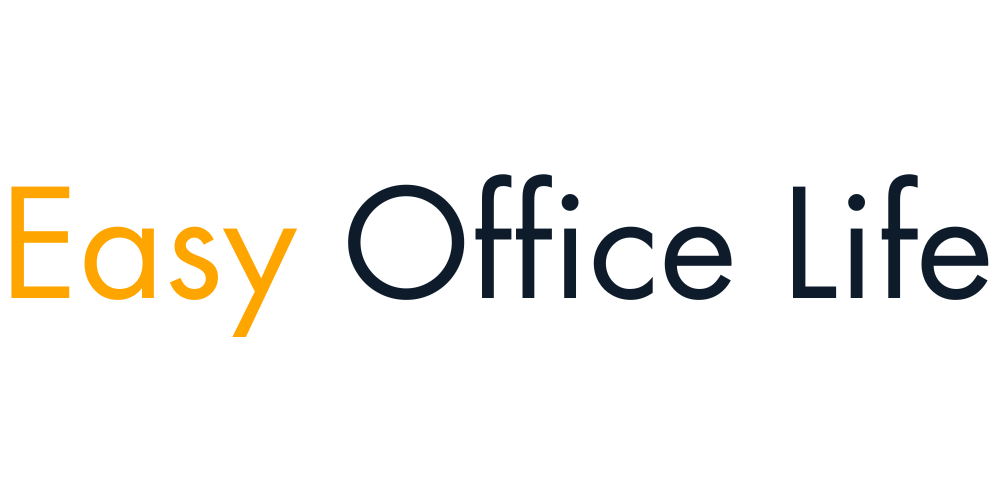
Understanding the Importance of Boundaries in Remote Work
As remote work becomes increasingly prevalent, understanding the importance of setting boundaries is crucial for individuals striving to maintain a healthy work-life balance. The nature of remote employment often leads to an overlap between professional responsibilities and personal life, making it essential to establish clear limits to mitigate potential adverse effects. Without proper boundaries, professionals may find themselves working longer hours, leading to exhaustion, stress, and burnout.
The potential pitfalls of blurred lines between work and home life can have significant implications for mental health. Prolonged exposure to work-related pressures without the opportunity to unplug can result in heightened anxiety and feelings of isolation. Additionally, the inability to disconnect from work responsibilities may hinder one’s enjoyment of personal time, contributing to relational strain among family members. When family dynamics are disrupted due to work encroaching into personal time, the overall quality of interactions can deteriorate, leading to further stress and dissatisfaction.
Moreover, productivity can be negatively impacted when boundaries are not effectively upheld. Remote workers may find it challenging to concentrate if they are continually drawn into work-related tasks during personal time. Conversely, overworking can cause fatigue that diminishes overall efficiency and performance. Therefore, implementing tips for setting boundaries in remote work becomes vital not only for personal well-being but also for sustaining high levels of productivity.
By recognizing the importance of boundaries, remote workers can create a more structured environment that promotes a balanced lifestyle. This, in turn, acknowledges the multifaceted roles individuals play in both their professional and personal lives. In recognizing these challenges, one can take proactive steps to establish healthier work habits that respect the separation between home life and professional duties.
Identifying Your Personal and Professional Boundaries
Establishing clear personal and professional boundaries is essential for maintaining balance in remote work environments. These boundaries help delineate where work ends and personal time begins, contributing to overall well-being. To embark on this process, self-reflection is a crucial first step. Individuals should take time to assess their current work-life balance and identify areas of improvement.
Start by evaluating how much time you devote to work versus personal activities. Consider creating a daily journal to track your hours, noting when you feel most productive or overwhelmed. This can illuminate patterns that may need adjustment for better time management. Establishing specific working hours is one of the most effective tips for setting boundaries in remote work. By clearly marking your availability, both you and your colleagues will have a defined understanding of when you are approachable for work-related discussions.
Next, examine your workspace. A dedicated work area can help mentally separate professional responsibilities from personal life. If possible, designate a specific room or corner of a room as your workspace. This physical boundary fosters an environment conducive to productivity and minimizes distractions. Additionally, consider your communication preferences. Determine how often you wish to engage with colleagues outside work hours and communicate these boundaries clearly to avoid unexpected interruptions.
Lastly, be mindful of your emotional and mental limits. Understanding how various tasks or interactions affect your stress levels is vital. By acknowledging these feelings, you can advocate for yourself to ensure your workload remains manageable. Identifying personal and professional boundaries is not just about structuring your day; it is about creating a sustainable remote work environment that promotes both productivity and well-being.
Communicating Boundaries with Colleagues and Supervisors
Effective communication is pivotal when it comes to establishing and maintaining boundaries in remote work settings. To successfully convey personal boundaries to colleagues and supervisors, clarity and assertiveness are essential. Begin by clearly outlining your working hours, availability, and preferred communication channels. This transparency helps to manage expectations and reduces the likelihood of misunderstandings.
Utilizing direct language is crucial when discussing your boundaries. Instead of vague statements, opt for straightforward phrases that outline your limits. For instance, rather than saying, “I might be able to respond after hours,” it is more effective to state, “I will not be available for work-related communication after 6 PM.” This affirmation not only establishes your work-life balance but also sets clear parameters for colleagues.
Regular check-ins with team members are another effective strategy for reinforcing these boundaries. Scheduling short meetings to discuss ongoing projects allows you to reiterate your availability and address any concerns regarding workload or communication practices. During these meetings, encourage feedback, and be open to re-evaluating boundaries as circumstances change. This dialogue fosters transparency and builds a culture of respect where team members feel comfortable discussing their own boundaries.
Moreover, leveraging technology can significantly aid in setting these limits. Utilize calendar tools to block off personal time or set your status on communication platforms to signal when you are unavailable. By taking these proactive steps, you demonstrate your commitment to maintaining a healthy work environment while illustrating the importance of mutual respect among colleagues.
In conclusion, effective communication regarding boundaries is essential in remote work. By articulating your limits clearly, engaging in regular check-ins, and utilizing technological tools, you can create a supportive work atmosphere that respects personal time while fostering collaboration and productivity.
Establishing a Dedicated Workspace at Home
Creating a dedicated workspace at home is an essential step for improving productivity and minimizing distractions in a remote work environment. One of the first considerations should be the physical layout of the workspace. Choose a location in your home that is separate from communal areas, such as the living room or kitchen, where distractions are more likely to occur. Ideally, this space should be as quiet and private as possible, allowing for better focus during work hours.
When setting up the physical space, consider the furniture you will use. A comfortable, ergonomic chair and a sturdy desk are vital to maintaining good posture and reducing physical discomfort. It’s recommended to invest in a chair that provides proper support, as long hours of sitting can lead to fatigue and strain. Ensure that your computer’s screen is at eye level, and your keyboard is positioned so that your wrists remain straight while typing. This setup not only improves comfort but also enhances overall productivity.
In addition to the physical arrangement, consider personalizing your workspace to make it more inviting and conducive to work. This can be achieved through thoughtful decor, the addition of plants, or motivational quotes. A well-organized workspace that reflects your personality can make the environment feel more uplifting and engaging, ultimately aiding your focus.
Significantly, separating your work environment from leisure is critical in remote work settings. By designating specific boundaries, it becomes easier to transition in and out of work mode. Establishing a dedicated workspace encourages a mental switch between personal and professional time, offering you a clearer distinction in your daily routine. Implementing these tips for setting boundaries in remote work will create a productive atmosphere that fosters both efficiency and well-being.
Creating a Structured Work Schedule
Establishing a structured work schedule is a fundamental strategy for effective remote work. By having a well-defined timeline for daily tasks, individuals can enhance their productivity, maintain focus, and significantly reduce the risk of burnout. One of the most efficient methods for organizing your workday is through time-blocking. This approach involves allocating specific time slots for particular tasks, thereby promoting a disciplined use of time and discouraging distractions. For instance, setting aside two uninterrupted hours for deep work can allow for substantial progress on important projects.
To implement a structured work schedule effectively, prioritization of tasks is crucial. Begin each week by identifying the most critical assignments that need completion. Utilizing techniques such as the Eisenhower Matrix can help in distinguishing between urgent and important tasks, allowing for a more organized approach to daily responsibilities. This method not only aids in ensuring that high-priority tasks are attended to first, but it also streamlines the overall workflow, leading to increased efficiency in remote work settings.
Moreover, regular breaks are vital components of a structured work schedule. They provide necessary mental relief and help in maintaining sustained focus throughout the day. The Pomodoro Technique, which involves working for 25 minutes followed by a five-minute break, is one effective approach that can be utilized. This cycle not only maximizes concentration but also reduces fatigue. It is also beneficial to invest in productivity apps, such as Todoist or Trello, which can assist in monitoring tasks and ensuring adherence to the established work schedule. Utilizing these tools can help implement the previously mentioned tips for setting boundaries in remote work, fostering a healthier work-life balance.
By actively designing a structured work schedule that includes time-blocking, prioritization, and regular breaks, remote workers can significantly enhance their productivity and overall job satisfaction.
Setting Technology Boundaries
In an increasingly digitized work environment, establishing clear technology boundaries is crucial for maintaining productivity and well-being. Begin by managing notifications effectively. Mobile devices and applications often bombard users with alerts, leading to constant interruptions. To counteract this, consider customizing notification settings. Limit alerts to only essential messages, particularly during designated work hours. This will help create a focused work atmosphere, minimizing distractions and enhancing overall productivity.
Next, it is vital to limit after-hours communications. The flexibility that remote work offers can blur the lines between personal and professional life, leading to instances where work encroaches on personal time. To avoid this, communicate your availability to colleagues and supervisors. Set specific hours when you will respond to work-related communications, and utilize your organization’s email or messaging guidelines to establish that work should remain within those defined hours. This practice can promote a healthier work-life balance and minimize burnout.
Utilizing ‘do not disturb’ features on various devices can also support these boundaries. Most operating systems and applications now offer options to temporarily silence notifications during specific times. Enabling these features during designated work hours or breaks can help create a more focused work environment. Additionally, these settings can reinforce personal time away from technology, thereby allowing for rest and rejuvenation.
Ultimately, the goal of technology boundaries in remote work is to ensure that technology serves as a facilitator rather than a distraction. By implementing these strategies, individuals can foster a more balanced remote work experience. Setting technology boundaries not only enhances productivity but also contributes to maintaining a healthy separation between work and personal life.
Practicing Self-Care and Downtime
In the context of remote work, setting boundaries is crucial not only for productivity but also for maintaining mental well-being. One of the most effective tips for setting boundaries in remote work is to prioritize self-care and scheduled downtime. Remote workers often find it challenging to separate their professional responsibilities from personal time, leading to burnout. Incorporating self-care practices into your daily routine can significantly enhance your overall quality of life.
Engaging in hobbies is an excellent way to ensure that you allocate time for activities that invigorate you. Whether it’s painting, gardening, or playing a musical instrument, dedicating time to explore your passions can provide a healthy escape from work-related stress. Additionally, making time for exercise is paramount. Physical activity not only boosts your mood but also improves concentration and productivity. Implementing a structured exercise routine, even if it’s just a 30-minute walk, can make a substantial difference in your remote work experience.
Mindfulness practices, such as meditation or deep-breathing exercises, also support mental clarity and emotional balance. Setting aside a few minutes each day to engage in mindfulness can help you recharge and maintain focus throughout your workday. Furthermore, consider creating a designated workspace that fosters both productivity and relaxation. This separation can serve as a physical boundary, allowing you to ‘leave’ work behind when the day is over.
By consciously integrating these self-care tips into your routine, you will not only enhance your work-life balance but also improve your resilience against the challenges of remote work. The key lies in recognizing the importance of downtime and making a commitment to prioritize your well-being while navigating through your professional responsibilities.
Getting Support from Management and HR
In the context of remote work, setting boundaries is vital for maintaining a healthy work-life balance. One of the key resources available to employees in this regard is their management and Human Resources (HR) departments. It is essential to engage in open communication with management to express the need for support in establishing and upholding these boundaries. When expressing concerns regarding work-life balance, employees should articulate specific challenges they face in the remote work environment. This approach fosters a productive dialogue that can lead to the development of tailored strategies aimed at mitigating work-related stress.
Moreover, organizations can implement policies that encourage employees to delineate their work and personal time effectively. Policies promoting flexible working hours and clear expectations regarding availability can significantly reduce the instances of burnout among remote workers. Management’s role extends to modeling these behaviors; by demonstrating a commitment to work-life balance themselves, leaders can reinforce the importance of setting boundaries to their teams. Encouraging employees to take scheduled breaks and ensuring adequate time off are also practices that support a healthier work dynamic.
Furthermore, HR can play a crucial role in disseminating resources that guide employees in setting their boundaries. This may include workshops on time management, stress reduction techniques, and advice on how to communicate needs assertively. An awareness of the impacts of remote work on personal wellbeing is essential for fostering an environment conducive to productivity and satisfaction. Organizations that actively engage with employees on these issues will not only improve individual performance but also cultivate a more positive overall workplace culture.
In conclusion, by collaborating with management and HR, employees can effectively implement the tips for setting boundaries in remote work. Through supportive policies and proactive communication, a healthier work atmosphere can be established, ultimately benefitting both the organization and its workforce.
Reviewing and Adjusting Boundaries Over Time
In the realm of remote work, boundaries are not only essential for maintaining a healthy work-life balance, but they also require regular review and adjustment as personal and professional circumstances evolve. As individuals navigate their work environments, it is crucial to periodically assess whether existing boundaries effectively serve their needs. This evaluation might involve reflecting on changes in workload, family dynamics, or personal priorities, which can inadvertently lead to boundary violations if left unaddressed.
A proactive approach to identifying when boundaries are being infringed upon can significantly enhance the effectiveness of remote work practices. One effective strategy is to maintain an ongoing dialogue with oneself and, if applicable, involve colleagues or family members. Engaging in discussions about workload expectations, personal time, and availability can help bring clarity to any potential overlaps between work and home life. Signs that boundaries may need adjustment include feelings of burnout, constant distractions, or a sense of guilt when disengaging from work tasks.
Being flexible and open to change is vital in the face of shifting circumstances. As individuals become more accustomed to their remote work roles, they may find that certain boundaries established in the early stages no longer apply or require refinement. For example, work hours may need to be adjusted to better accommodate family responsibilities or personal projects. It is important to remain adaptable and to view boundaries not as rigid rules, but as guidelines that can evolve. By embracing this perspective, remote workers can continually refine their strategies, ensuring they align with their current situation while also fostering productivity and well-being.






